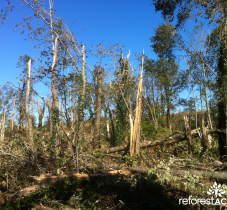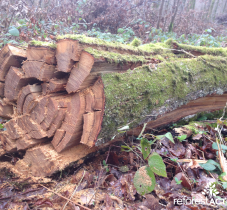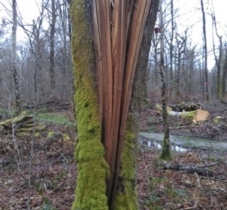Project description
Reforest'Action invites you to restore this forest devastated by the tornado of September 16, 2015.
The project at a glance
- Number of trees to be planted: 2?000
- Planting area: 14.25 hectares
- Species planted: sessile oak (60%), torminal alisier (10%), sycamore maple (10%), cherry (10%), country maple (10%)
- Type of project: reforestation following a storm
Background information
The forest of Vaux Vauthier, like the entire Saulx Valley area, was hit very hard. Several thousand cubic metres of wood were shredded on foot. Following this, a maximum valorisation of natural regeneration was envisaged. But this one proved to be very complex. Indeed, in the areas totally cleared by the tornado, the bramble colonized the space and literally stifled the regeneration of the plot. That is why the choice of the plantation was made. Nevertheless, if the seedlings (small trees from naturally occurring seeds) were to express themselves more, the density of the plantation would be reduced.
Benefits
Experience and extensive research show that the productivity of forest species increases with species diversity. Indeed, species "educate" each other: they will compete for light and resources, pushing each other to grow faster and stronger ! Finally, the diversity of species allows an increased acceptance of biodiversity, each species holding its own specific procession, ultimately increasing the richness of the soil and therefore productivity.
Secondly, the multitude of species makes it possible to strengthen the resistance of stands to diseases and biological attacks, which will have much more difficulty dispersing since they are often species-specific. The difference in height and conformation of the tops also provides better resistance to strong winds.







